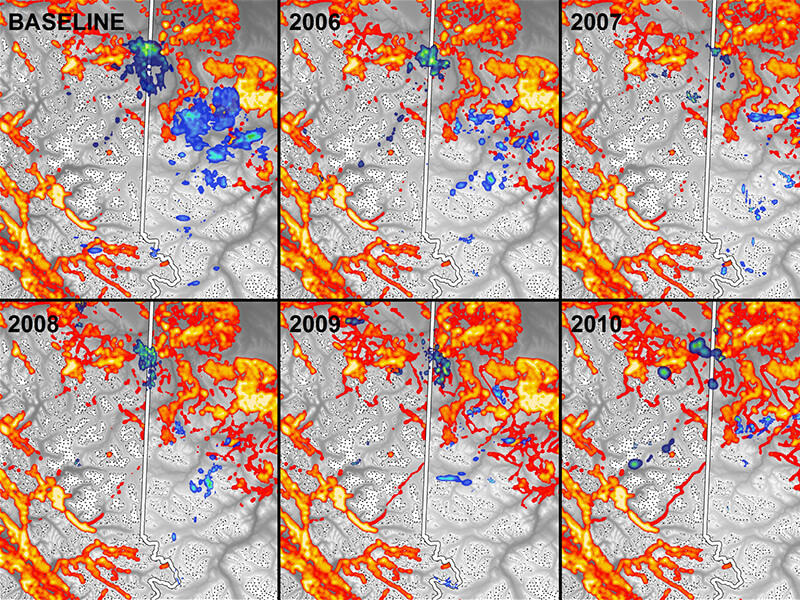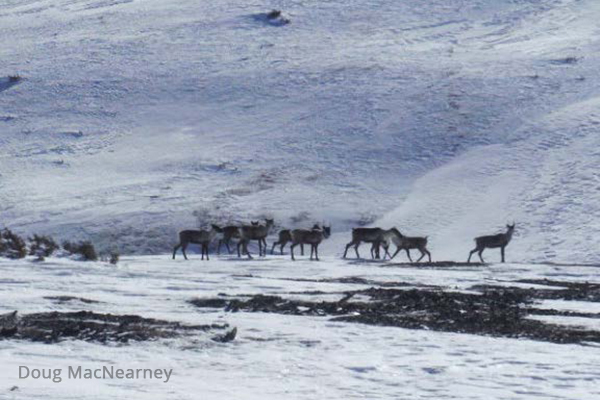Abstract
Anthropogenic landscape change (i.e., disturbance) is recognized as an important factor in the decline and extirpation of wildlife populations. Understanding and monitoring the relationship between wildlife distribution and disturbance is necessary for effective conservation planning. Many studies consider disturbance as a covariate explaining wildlife behavior. However, we propose that there are several advantages to considering the spatial relationship between disturbance and wildlife directly using utilization distributions (UDs), including objective assessment of the spatially explicit overlap between wildlife and disturbance, and the ability to track trends in this relationship over time. Here, we examined how central mountain woodland caribou (Rangifer tarandus caribou) distribution changed over time in relation to (i) anthropogenic disturbance, baseline range (defined using telemetry data from 1998 to 2005), and alpine habitat; and (ii) interannual climate variation (North Pacific Index; NPI). We developed seasonal UDs for caribou in westcentral Alberta and east-central British Columbia, Canada, monitored with GPS collars between 1998 and 2013. We mapped the cumulative annual density of disturbance features within caribou range and used indices of overlap to determine the spatial relationship and trend between caribou UDs, anthropogenic disturbance, baseline range, alpine habitat, and the NPI. Anthropogenic disturbance increased over time, but the overlap between caribou UDs and disturbance did not. Caribou use of alpine habitat during spring, fall, and late winter increased over time, concurrent with a decrease in use of baseline range. Overlap between caribou UDs and disturbance increased during spring and fall following relatively cold, snowy winters (high NPI), but overall, climate did not explain changes in caribou distribution over time. We provide evidence supporting the hypothesis that caribou populations adjust their spatial distribution in relation to anthropogenic landscape change. Our findings could have implications for population persistence if distributional shifts result in greater use of alpine habitat during winter. Monitoring longterm changes in the distribution of populations is a valuable component of conservation planning for species at risk in disturbed landscapes.
Citation
MacNearney, D., Pigeon, K., Stenhouse, G., Nijland, W., Coops, N. C. and Finnegan, L. (2016), Heading for the hills? Evaluating spatial distribution of woodland caribou in response to a growing anthropogenic disturbance footprint. Ecol Evol. doi: 10.1002/ece3.2362








